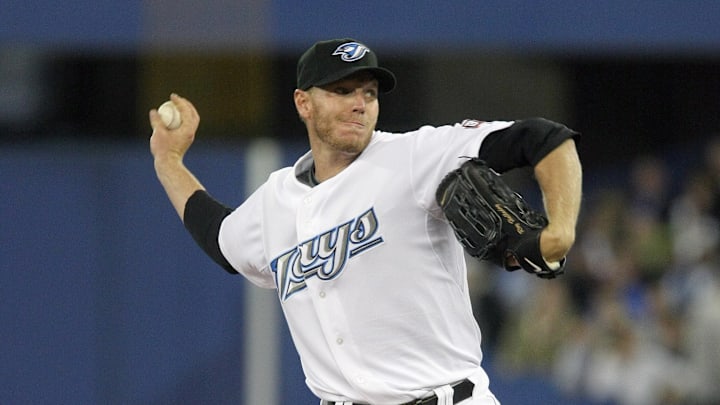No. 3 A future All-Star taunts the Blue Jays
The summer of 2000 was a good time for the Toronto Blue Jays. They were contending for the AL East lead. The formidable Yankees suddenly seemed vulnerable. The Blue Jays were just 1.5 games out in the division. Carlos Delgado was having an MVP-caliber season.
But the pitching staff needed help. Roy Halladay’s once-promising career derailed as he posted a 10.64 ERA and was sent down to Single-A. Chris Carpenter was demoted to the bullpen. To solve the problem, GM Gord Ash went shopping and settled on Esteban Loaiza, a 28-year-old right-hander who was 5-6 with a 5.37 ERA in 17 starts for the Texas Rangers.
The Blue Jays gave up two prospects for Loaiza, Michael Young and Darwin Cubillan. Young, a fifth-round pick out of UC-Santa Barbara in 1997, was batting .275 with six homers at Double-A at the time of the trade. Cubillan, a right-handed pitcher, had made his MLB debut back in May and had an 8.04 ERA in seven appearances. It seemed like a small price to pay for immediate help. They were wrong.
Loaiza went 5-7 with a 3.62 ERA in 14 starts for the Blue Jays the rest of the season, but the team’s fortunes didn’t improve. They went just 32-34 after the trade and finished in third place in the division, 4.5 games back of the Yankees. They wouldn’t come any closer to the playoffs for another 15 years.
Loaiza won 25 games over the next two seasons with the Blue Jays, posting a 4.96 ERA in 69 starts before he signed with the White Sox as a free agent. It was there that he had his best season, finishing runner-up for the AL Cy Young Award in 2003.
As for Young, he spent the next decade showing his former team what they had given up. Young starred for the Rangers for 13 years. He made seven All-Star teams. He won a batting title. He twice drove in at least 100 runs in a season.
The Rangers made the World Series in back-to-back years with Young in their lineup. He left the club after 2012 as the franchise’s all-time leader in games played and hits. Only Juan González and Rafael Palmeiro, two players with Hall of Fame credentials if not for their ties to performance-enhancing drugs, drove in more runs in a Rangers uniform.
Loaiza never became the star the Blue Jays envisioned when they made the trade. Young did, a constant reminder of what the Blue Jays could’ve had.
